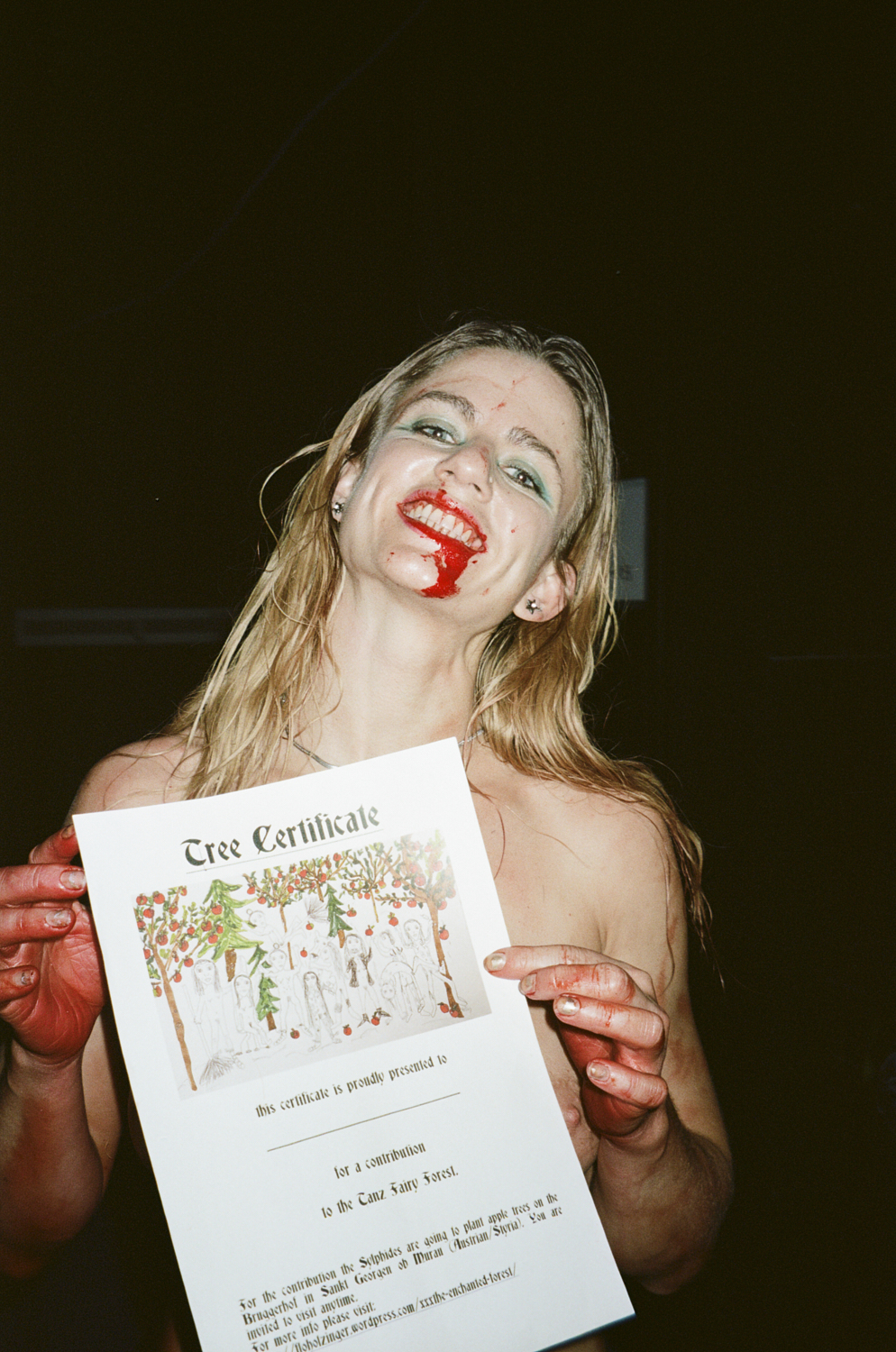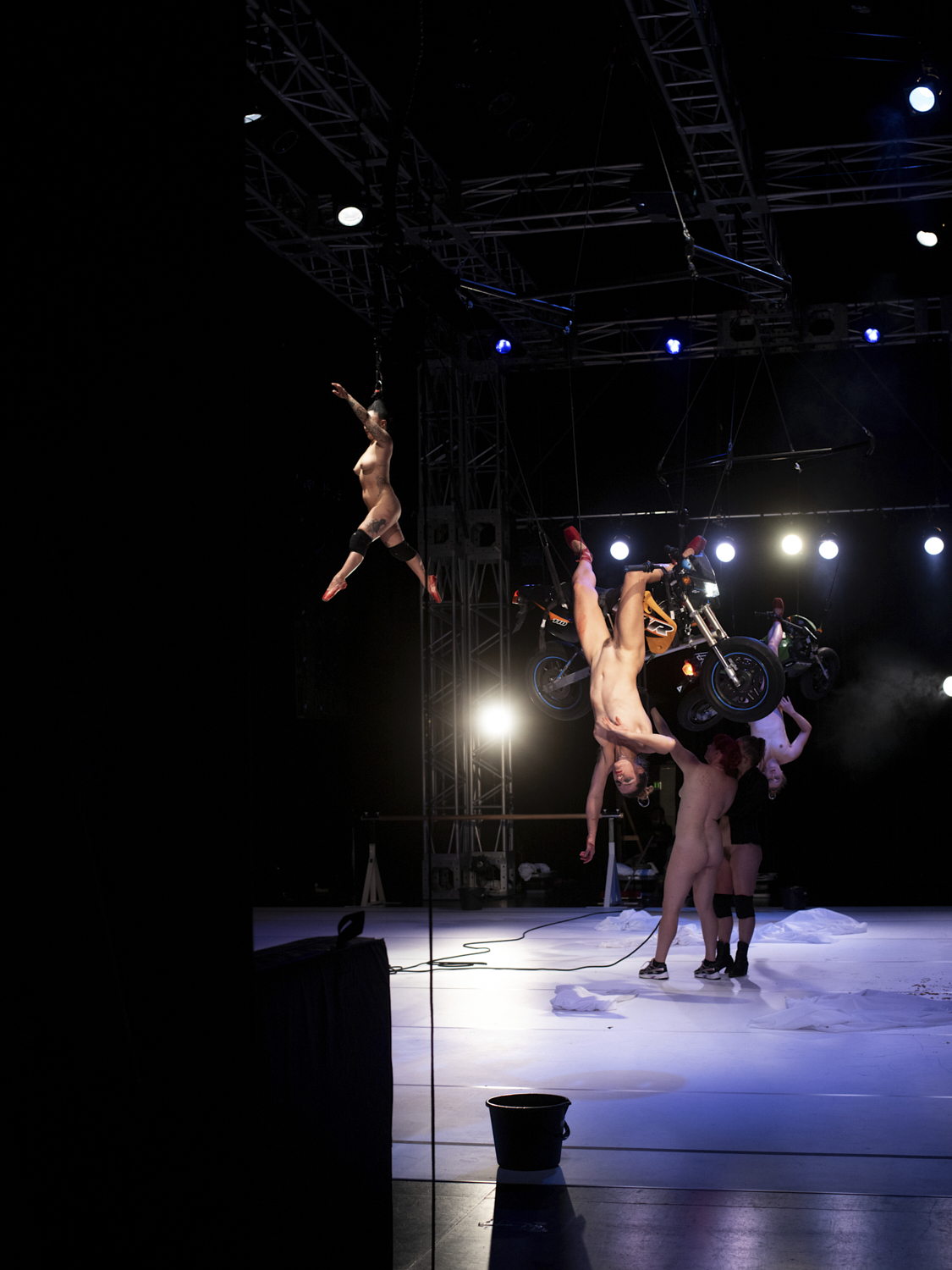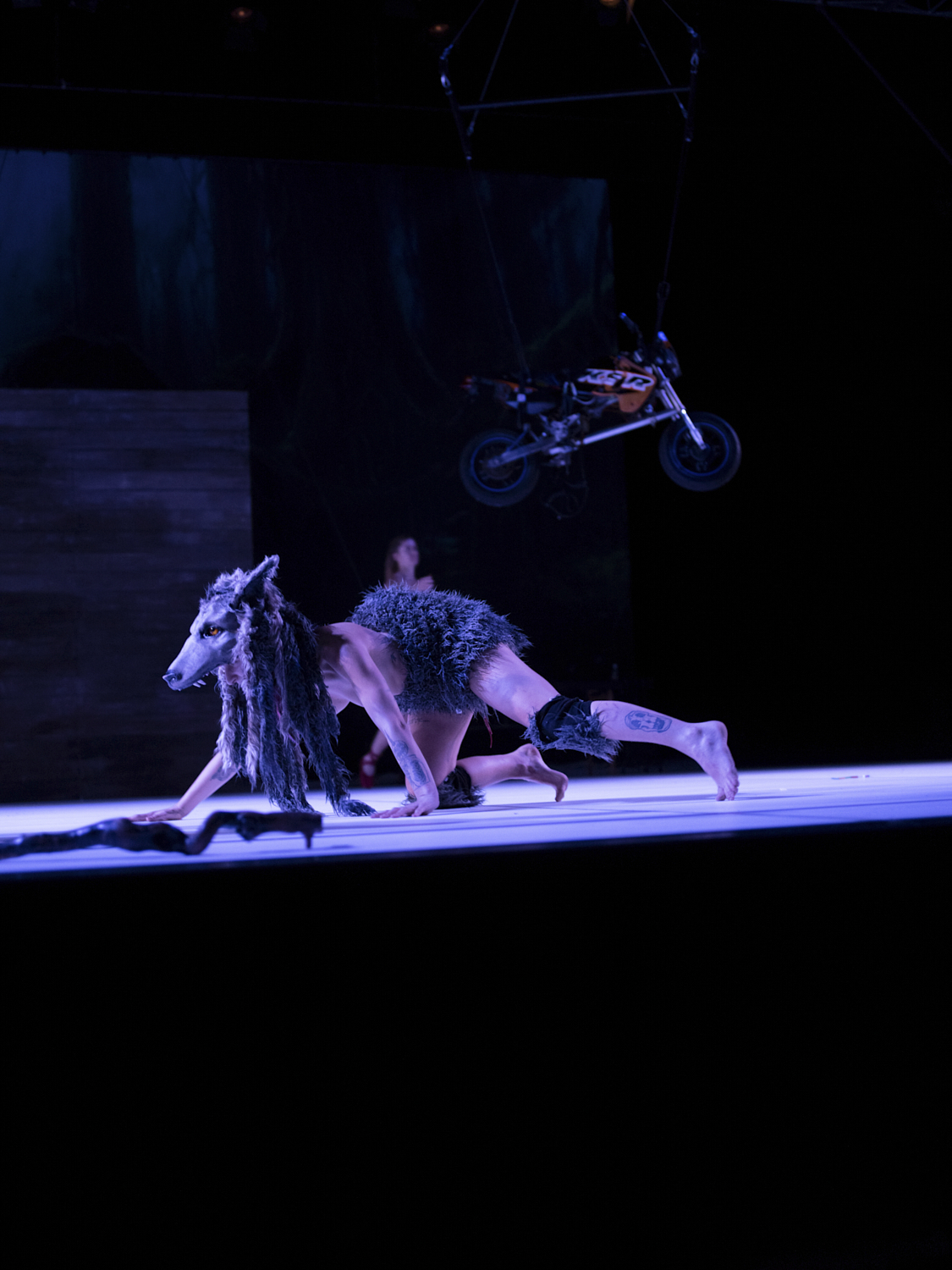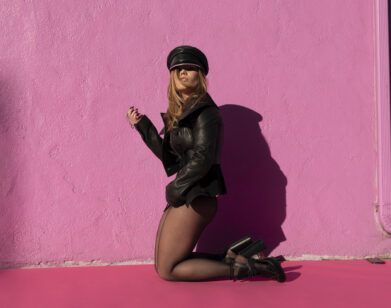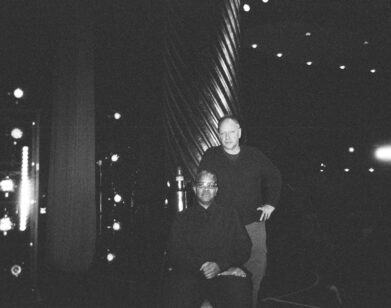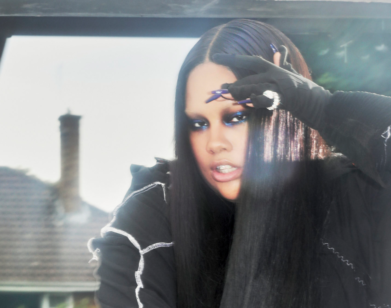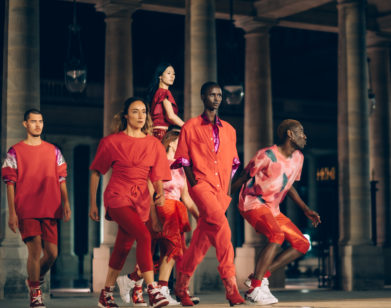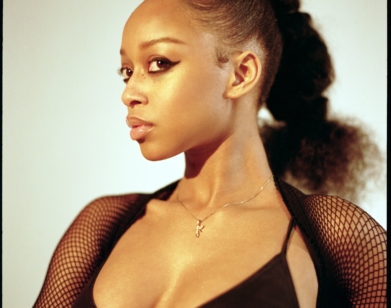DANCE
“There’s Some Bloody Stuff There”: Behind the Scenes of Florentina Holzinger’s Body Horror Ballet
For Austrian choreographer and dancer Florentina Holzinger, ballet is the ultimate magic trick. “The illusion of ballet is the opposite of the training of a ballerina,” she told me last week. “It was interesting for us to celebrate the illusion of the body in flight, and at the same time, show what is inside a pointe shoe.” Holzinger, whose feminist opera SANCTA scandalized German audiences last summer with its body horror and criticisms of the Catholic Church, is preparing for the North American premiere of her 2019 work TANZ at NYU’s Skirball Center, which runs for two nights only this weekend. Organized around the conceit of a dance lesson, TANZ is Suspiria by way of John Waters, a dynamic work that blends classical ballet technique, witchcraft, and sideshow tricks that require Holzinger and her fellow performers to push their bodies to the absolute limits of what’s possible. With fascism, misogyny, and artistic censorship rising in both the U.S. and Europe, Holzinger called in from rehearsal to talk about bringing her acrobatic ballet to New York, her artistic beginnings, and her big plans for next year’s Austrian Pavilion at the Venice Biennale.
———
MADELEINE SEIDEL: Hi, Florentina. How are you?
FLORENTINA HOLZINGER: I’m good, thank you. And you?
SEIDEL: It’s a snowy morning here in New York, so we’re getting this last little bit of winter.
HOLZINGER: Okay, we’ll bring our winter clothes.
SEIDEL: Yes, it’s quite chilly. Are you calling from practice?
HOLZINGER: I’m in the middle of rehearsal, exactly.
SEIDEL: Oh, amazing. I want to start by asking what drew you initially to becoming a dancer? I know you also have a background in sports, too.
HOLZINGER: Not really. It was very much on an amateur level. I know that it was written somewhere that I was an athlete in the past, but that’s actually not true. I guess I have a sports background rather than a dance background. That’s a little bit the truth. I come more from acrobatics than from ballet.
SEIDEL: That’s a good way to put it. For me, what makes your work so successful and fascinating is that it does certainly have this basis in classic ballet technique, but there’s also this very acrobatic and gymnastic turn to it, especially in TANZ with dancers riding motorcycles suspended in the air. You’ve described it as a little bit of a circus in some of your past interviews. But in TANZ and your other works, like Apollon, there is a real focus on dance history. I mean, you’re referencing [George] Balanchine and La Sylphide here. Is there a level of research that goes into your work to start the choreography?
HOLZINGER: Yes. From project to project, it’s different. For TANZ, of course, we were zoomed in on romantic ballet. So we really dug into the archives of romantic ballets and talked with different dance history lecturers to gain knowledge about the topic. That is usually how the structure of the process is—we bring in people who have certain expertise before we start working with it.
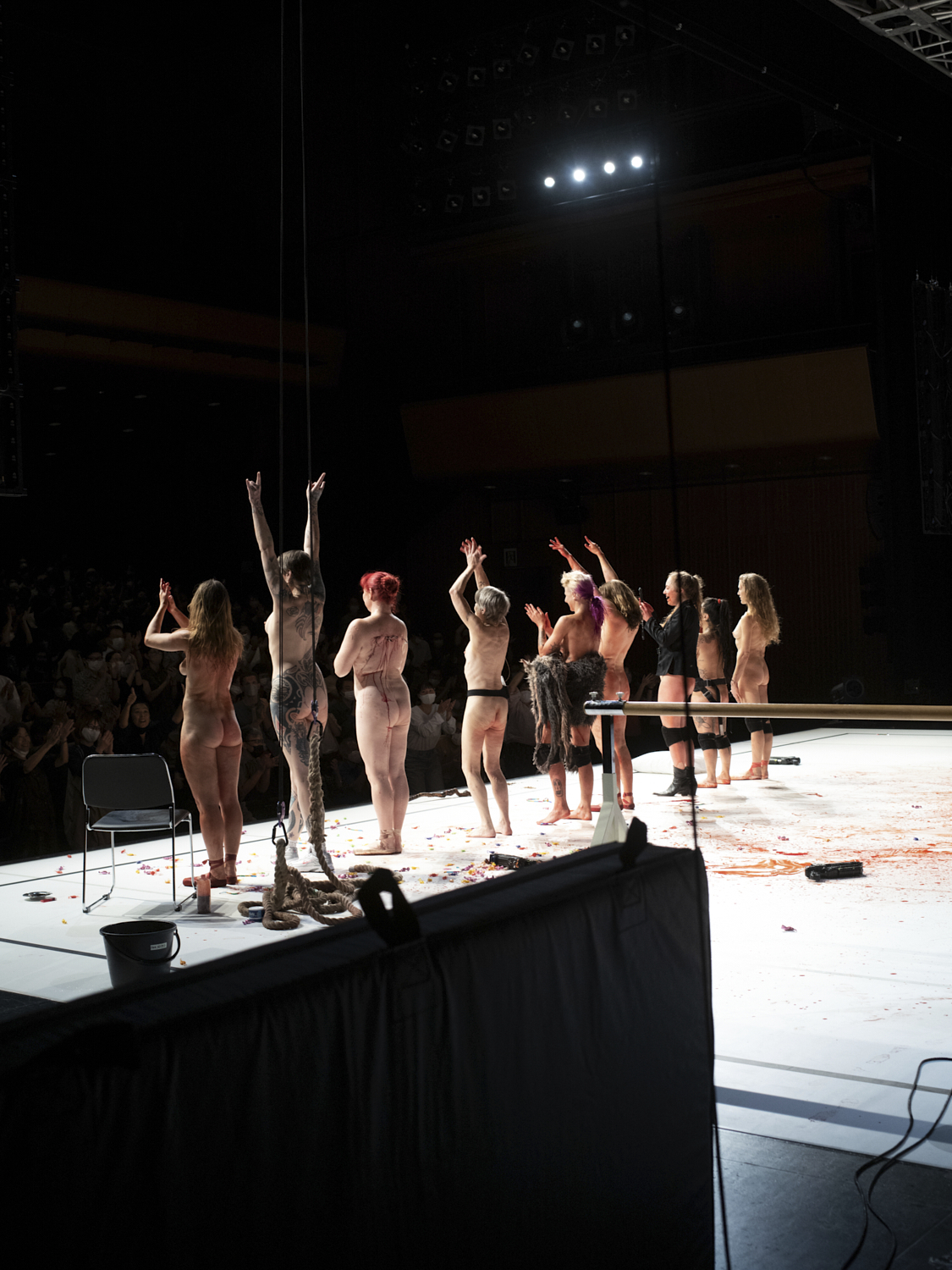
Claire Philippart, Lucifire, Annina Machaz, Netti Nüganen, Suzn Pasyon, Laura Stokes, Veronica Thompson, Xana Novais, and Florentina Holzinger.
SEIDEL: What specifically drew you to Romantic ballet? That’s a somewhat esoteric topic, but it fits the milieu of what you do with dance perfectly.
HOLZINGER: I had a fascination for it, I guess, because it’s very fairytale-ish and in that sense has a big camp dimension. There are all of these archetypes—fairies, witches, princesses—things that feminist discourse is also kind of obsessed with and are very multidimensional. For me, the fairytales of the ballet world are found in Romantic ballet. Of course, one of the basic elements of ballet is defying gravity or playing with the illusion of flight. Ballet as a technique depicts the body as weightless, as something that elevates the body strongly from the floor but also from the mundane. I was fascinated by Romantic ballet’s obsession with the metaphysical world and that the theater would mean people get a break from reality and enter into this fantasy world where bodies function in a different way.
SEIDEL: Yeah, one of the things that’s simultaneously drawn me in and repulsed me about ballet is that it forces you, the dancer, to be superhuman. That’s something that you address really well in your choreography—this contradiction of ballet that is beautiful, but also really painful in terms of what you put your body through.
HOLZINGER: Yes, exactly. This has always been something I was curious about in creating work, showing mechanics or the part of the practice that we are not supposed to see on stage. The illusion of ballet is the opposite of the training of a ballerina, which is very hardcore and strenuous on the body and muscles and ligaments. Your feet wear out from it. On stage, of course, it’s the perfect illusion of complete ease in movement. It was interesting for us to celebrate the illusion of the body in flight, and at the same time, show what is inside a pointe shoe. There’s some bloody stuff there. We show the inside, basically, of the ballet, not just the body from the outside with its accomplished form.
SEIDEL: You work very closely with your collaborators and your dancers. You also dance in a lot of your pieces. What’s the casting process for finding dancers to join you on this wild ride that you’re proposing with your work?
HOLZINGER: By now, I’ve worked with many people in my cast for over 10 years. As we’re working on different topics, we add to the cast or sometimes people are not available. It’s quite fluid, how our company assembles. In TANZ, I was specifically casting people who have expertise in physical suspension, or taking the body away from the floor. This brought me, of course, to something I do in general. I work often with people from the circus and from the sideshow world or so-called freak shows, because they know so much about the body in flight, using the body as this matter with which to do things that other people deem impossible or painful. So in my cast, they were all people who bring this certain know-how about making the body fly from their own work.
SEIDEL: With the Romantic theme, you had to find your own fairies and witches to populate the stage.
HOLZINGER: Exactly. We are a wild mix, right? There are some people that really come from mainstream ballet stages, contemporary dancers, people from circuses, and as I said, from sideshows. There are also body piercers, because we often work around blood and inflicting things on the body.
SEIDEL: The cast for TANZ is also very intergenerational, from people in their thirties to one performer in their eighties [veteran ballerina Beatrice Cordua]. Do you feel like the cast learns from each other as they’re going through rehearsals?
HOLZINGER: Definitely. There is a big aspect of that, especially in TANZ, which is based around a classroom setting where a teacher teaches something to students. In general, I often assemble my cast as people who teach each other from their own physical practices. I mean, I say in the show that we all have this in common. We work with and through the body but in very different ways, and it’s part of the process to share that amongst each other. It’s very interdisciplinary.
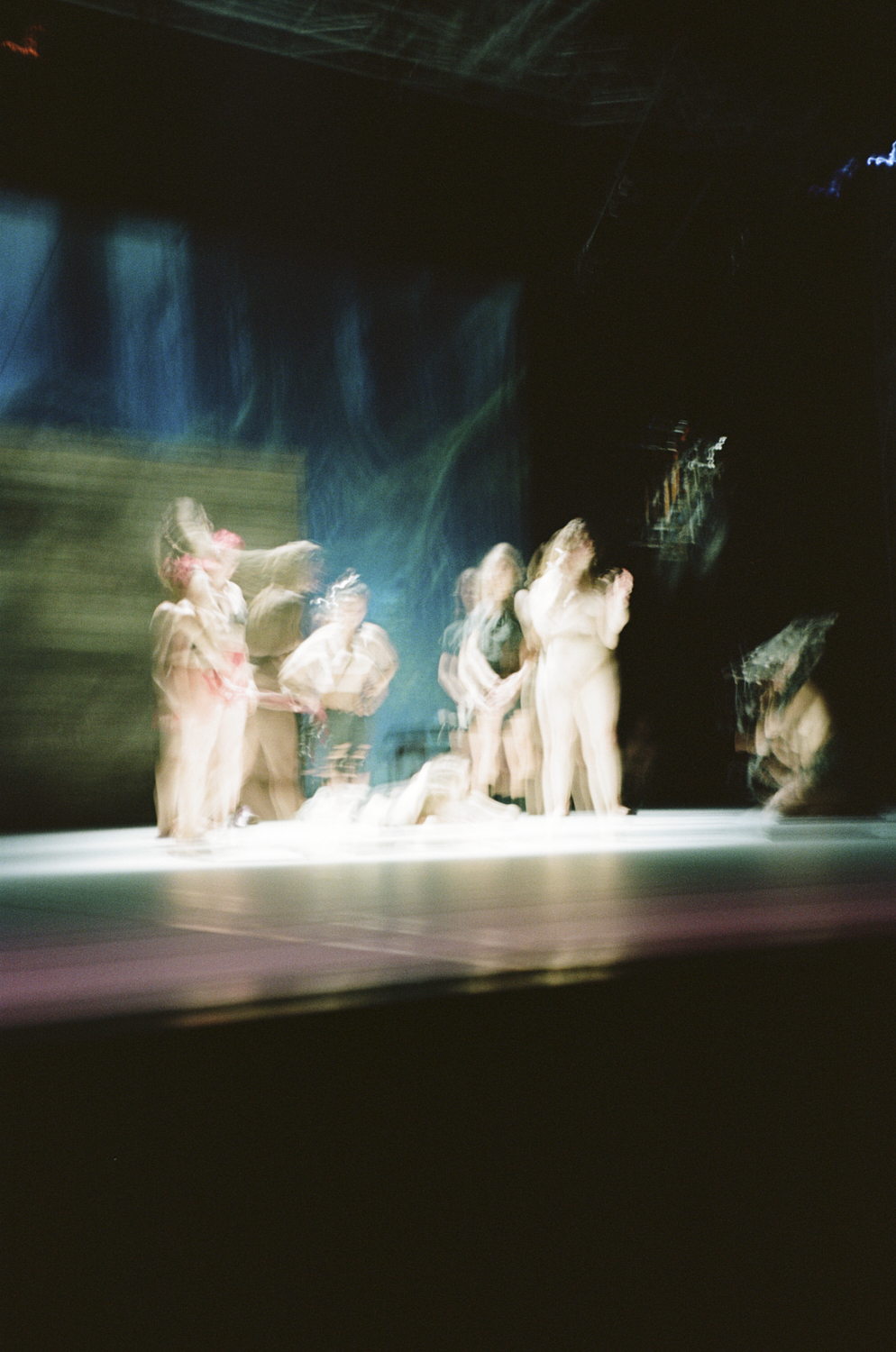
Renée Copraij Claire Philippart, Lucifire, Annina Machaz, Netti Nüganen, Suzn Pasyon, Laura Stokes, Veronica Thompson, Xana Novais, and Florentina Holzinger.
SEIDEL: So, this isn’t the worldwide premiere of TANZ, but it is the US premiere.
HOLZINGER: TANZ is really our baby show. We did it seven years ago or something. I think it’s only been five, but still, it was a long time ago.
SEIDEL: Are there ways that the show has changed? Maybe not even just in choreography, but do you view it differently now than when you first premiered it?
HOLZINGER: For me, a project comes very organically out of the previous project, and TANZ was important as a stepping stone for all of the things that came afterwards. Since then, I’ve moved on to doing really big ensemble pieces and opera works. The works have become much grander, for sure. We are definitely somewhere very different now.
SEIDEL: Speaking of grand works, you’ve had quite a big year or so, particularly with your opera SANCTA premiering in Germany last summer. It was quite controversial at the time in terms of the content on stage. Were you at all surprised by that reaction?
HOLZINGER: I was very surprised because I did not think that people would find it so outrageous to just name certain things about the church as they are. I did not think it was such an edgy subject since we all have seen Madonna in the ’80s and ’90s, and we have all seen Monty Python flicks. I mean, there is a lot of parody made about the church. I did not really see that we were doing anything more than that. It was actually a funny take from our side, so it was surprising what a backlash that got in the media. I guess the subjects were very clickbait friendly. Of course, I work with nudity and sexuality. To do that in the context of a show that works around themes of the church, people obviously like to read about it. It just completely spun out of control from a media perspective. Also, for the first time, we were not in an experimental theater context, but in the very German institutional framing of an opera house. There, people are much more used to seeing everything fake. It was quite scandalous to see real bodies and real things, which is completely normal for us coming from performance art. We like to play on the edge of what is illusion and what is real. That’s very essential for the work. For an opera audience, this can still be confusing. But honestly, the people who wrote about it in the intercontinental press definitely had not seen the show and wouldn’t write about it in that way had they actually seen it. The headlines were like, “People were passing out” and “It was a puke fest” and so on. This was exaggerated. We are working with real blood, so this is something that we are used to. It can happen that an audience [member] passes out if they see blood. It’s very simple and very physiological. Every opera house that I have ever been to has reassured me that, even if there is no real blood on the stage, this happens frequently where people pass out. As we know, the air is usually bad and opera takes forever and people are old. But ours was picked up in a way that would make you think that it was so shocking that people puked from it and passed out. I think there are a lot of factors that played into that.
SEIDEL: Your rise as a choreographer has dovetailed the really frightening rise of fascism and censorship in both the US and in Europe. Do you feel like you have a greater purpose to create works in these times, since you’re dealing with feminist and queer themes? Is it an act of resistance for you?
HOLZINGER: I don’t know. We try to take full liberty and freedom in what we want to create. The responses, as happened with SANCTA, pretty much show us the world and climate that we live in where the rights that women have fought for decades are again in question. We noticed in the comments that we got after the scandal with SANCTA that there is a lot of misogyny. It definitely gave us a certain urgency boost in the sense of we are not going to back down. We got violent and aggressive messages, threatening us. Of course, there was a bit of a question for me because I don’t want to endanger anybody on the stage. It was hard for us to navigate how to deal with the openly aggressive comments. Still, at the same time, there was a very strong feeling of that being exactly why it is important to deal with the topic so explicitly and really talk about women’s bodies in this way.
SEIDEL: Hell yeah, fight the power.
HOLZINGER: Yeah. It was very clear to us that the church was the blueprint for the biggest patriarchal system ever. Of course the patriarchy is going to complain and suffer from a show like this. But for us it’s like, then we’re doing something right.
SEIDEL: Absolutely. Even with the blowback from people who don’t understand the work and are not trying to understand the work, you’ve gained a lot of support as well. You’ll be representing Austria in the next Venice Biennale.
HOLZINGER: That is true. It’s a great opportunity and responsibility, of course. So we go in there without any sense of fear to confront the demons of the 21st century.
SEIDEL: Have you started planning? I know that in your proposal that you had an idea that involves Sea World, if I’m not mistaken.
HOLZINGER: Yes. Because of the big dimension that water plays in the Venice cultural landscape, we are really dealing with the water topic. In Ophelia’s Got Talent, we were very busy with this, as well. So people are going to encounter an underwater world, and we also really will take people under the water. I mean, we still need to find out how much of our wildest dreams we can realize, but we aim to really take people into the deep and confront them with the unknown.
SEIDEL: Amazing. I’m so excited, and I can’t wait to see TANZ next week.
HOLZINGER: Next week, oh my god.
SEIDEL: Best of luck, and get back to rehearsals!
HOLZINGER: Yes, thank you.

